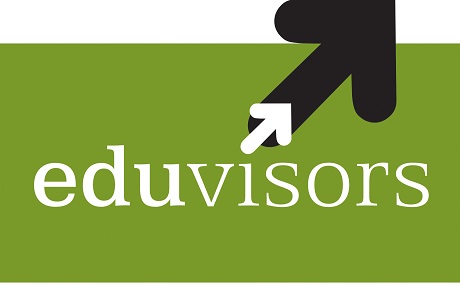Opening School’s Amidst a Pandemic – 5 things all schools must ensure
- June 25, 2020
- Posted by: Eduvisors
- Category: Blogs

As schools and educational institutions prepare to resume activities across the country, the scare of the pandemic worsens with each passing day. While governments have changed the narrative around the severity of the disease seeking public cooperation, school owners and operators must be mindful to strengthen their defense and develop strategies to mitigate, tackle and overcome the ill effects of the corona virus.
Schools need to understand that their eagerness to reopen should not result in nearsightedness. The rush to resume activities can lead to managerial oversight leading to drastic ramifications such as school closures and containment. Keeping the safety of all teachers, students and staff in mind, the schools must work towards creation of a detailed recommencement plan in line not only with the national regulations but also by understanding international best practices and guidelines issued by bodies such as UNESCO, WHO, IIEP etc.
Amidst the many attributes of schooling that must be evaluated by the management, here are 5 key areas that require the highest attention:
1.) Identify High Contact Zones
It is imperative for schools to seek out and identify areas in the school where students and staff come in close contact with each other. The best way of doing so is reviewing a student’s typical day in the school and identify likely common areas and interaction points where the student is widely exposed. Beginning from the classroom, cafeteria, auditoriums right down to water coolers and play grounds will need to be individually assessed in order to adhere to social distancing norms. In accordance with the respective state government regulations, schools must devise a student attendance strategy and supplement the same with cordoning off areas that require physical engagement and supervising the same to ensure that social distancing is strictly followed.
2.) Develop Sanitation Strategies
All school inventories must be properly sanitized at the end of each school day in order to make the school a hazard free environment. Regular cleaning and decontamination of guard rails, door handles, classroom benches, lab equipment etc. must be undertaken. School cleaning staffs must be provided with adequate PPE gear and should be allocated rotational shifts to continually clean lavatories, staff rooms, auditoriums etc. If the school provides transport, then all vehicles must properly be inspected and duly sanitized prior to student pickups as well as after drop offs.
3.) Revisit Academic Calendars
As schools choose to reopen, and activities resume, time is of the essence. Schools need to act fast and assertively to deal with the ill effects of the pandemic as well as address the need for completion of course content. All schools should actively look into their academic calendar and re-evaluate their options to achieve maximum course completion before the next academic session. Of course, the guidance of all affiliated boards is critical to this aspect, however schools should be well prepared to explore concepts such as accelerated learning and new age teaching in greater detail. Academic calendars must be condensed and optimized to achieve the maximum within the available time. Schools need to chalk off all non academic events and repurpose their time towards core education. This is the time when schools would need to make up for lost time and get back on their path to normalcy.
4.) Embrace Technology
The school education industry at large has been one of the worst hit industries across the world. In India, schools scrambled to shift curriculum online in the wake of the pandemic. COVID-19 has exposed the vulnerabilities of the education system and it is important, now more than ever for schools to become more accepting of the use of technology within their pedagogies. In emergency situations like the corona outbreak, technology is perhaps an enabler and not a deterrent to education as schools still believe. Schools must invest in teacher education and infrastructural improvements in order to introduce technology and modern day teaching aids within the classroom and enable unperturbed education.
5.) Rapidly Evolve
Schools, like all other industries have now ventured into uncharted territory. While medical science makes quantum leaps everyday in seeking a cure to the pandemic, schools must have their eyes and ears open to any new information that comes to light. They must be able to adapt, improvise and overcome any situation down the line without an impact on student education. They must strategize in a manner that allows them the flexibility to swiftly factor in any new changes that emerge in the coming months. They must review at regular intervals and further refine elements that are not working for them. School management must enable all stakeholders including teachers, students and parents to be ready to transition with the school as it battles the consequences of the pandemic in its own unique way. Schools must also consult, communicate and coordinate with the right departments actively in order to be ahead of the curve if the situation worsens.
As schools slowly grapple with the idea of running an institution amidst a global pandemic, here are a few safeguards that they can consider as part of their recommencement strategy:
- Installation of thermal scanners at school entrance to check body temperatures
- Setting up sanitizing stations around the school with contact less alcohol based sanitizer distribution
- Providing instant read thermometers to school infirmary and medical staff
- Suspend all activities requiring presence of more than 20 students such as morning assembly, sports etc.
- Keeping a mandatory safety kit in each classroom
- Ensuring classroom seating is such that 1.5m distance is maintained between 2 consecutive students
- Ensure sufficient signage and notices across the schools reminding everyone of the protocols at play
- Ensure individuals without masks are not permitted on the school premises
Using these as starting points, schools can build onwards to a robust and flexible strategy to efficiently reopen and resume activities. Schools can also seek out the right partnerships from leading organizations that are closely monitoring the impact of COVID-19 on the sector and can shoulder the responsibility alongside the management to help them expedite their progress to normalcy.
Do you have questions about how Eduvisors can help ? Send us an email and we’ll get in touch shortly.
